

Spanish cuisine is one of the most famous and prestigious at an international level and for this reason I am going to publish a series of tutorials for preparing typical Spanish dishes that are 100% vegan. Spanish chefs and their fires are recognized worldwide and awarded Michelin stars in elite cooking circles for their innovation and creativity. Many of these dishes are old recipes that have evolved over time and acquired new methods of preparation. The special location of Spain, in the south of Europe and located between the Mediterranean Sea and the Atlantic Ocean, means that its cuisine has special characteristics, as well as one of the main orchards in Europe due to its variety and quantity of fruits, vegetables and vegetables in this part of the planet. Its huge expanses of orange, lemon, pomegranate, olive, apple, cherry and other fruit trees, as well as the production of dry fruits such as walnuts, hazelnuts or almonds, make the Mediterranean influences clearly marked in its dishes. The cultures that have populated the country throughout history have marked their influence in a clear way when it comes to its culinary legacy.
Salmorejo recipe
INGREDIENTS FOR 4 PEOPLE:
- 3 medium tomatoes
- 1 peach
- 1 plum
- 1 small onion
- 1 clove garlic
- 1 green pepper
- 1 red bell pepper
- 2 slices of bread
- grapes
- walnuts
- virgin olive oil
-Apple vinager - pink salt



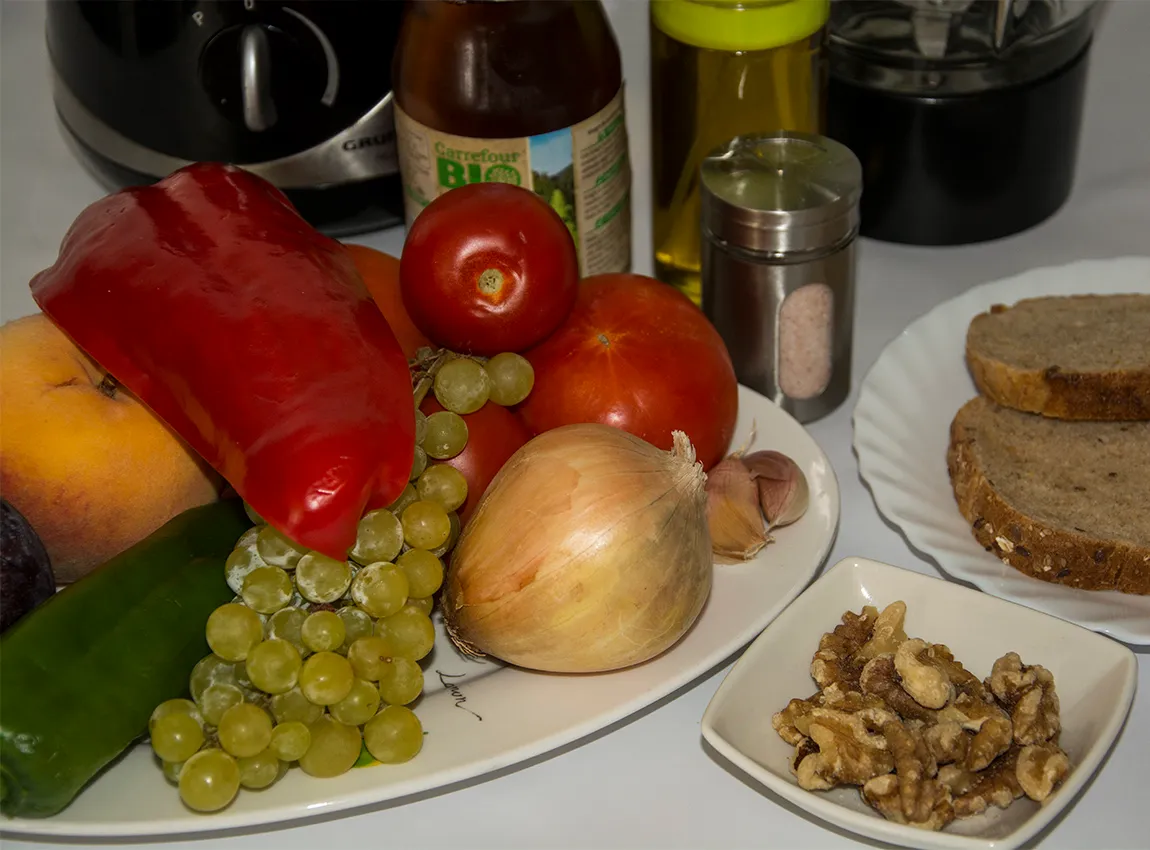
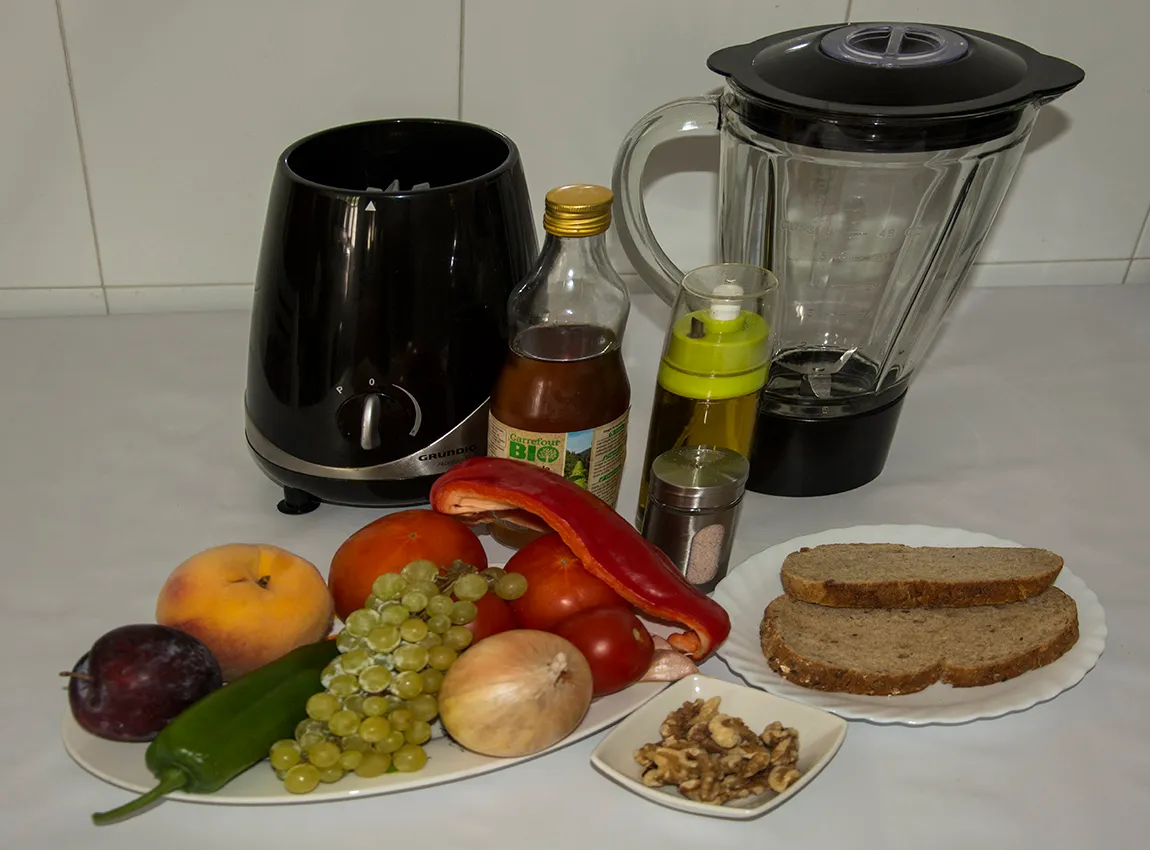

METHOD OF PREPARATION 4 RATIONS:




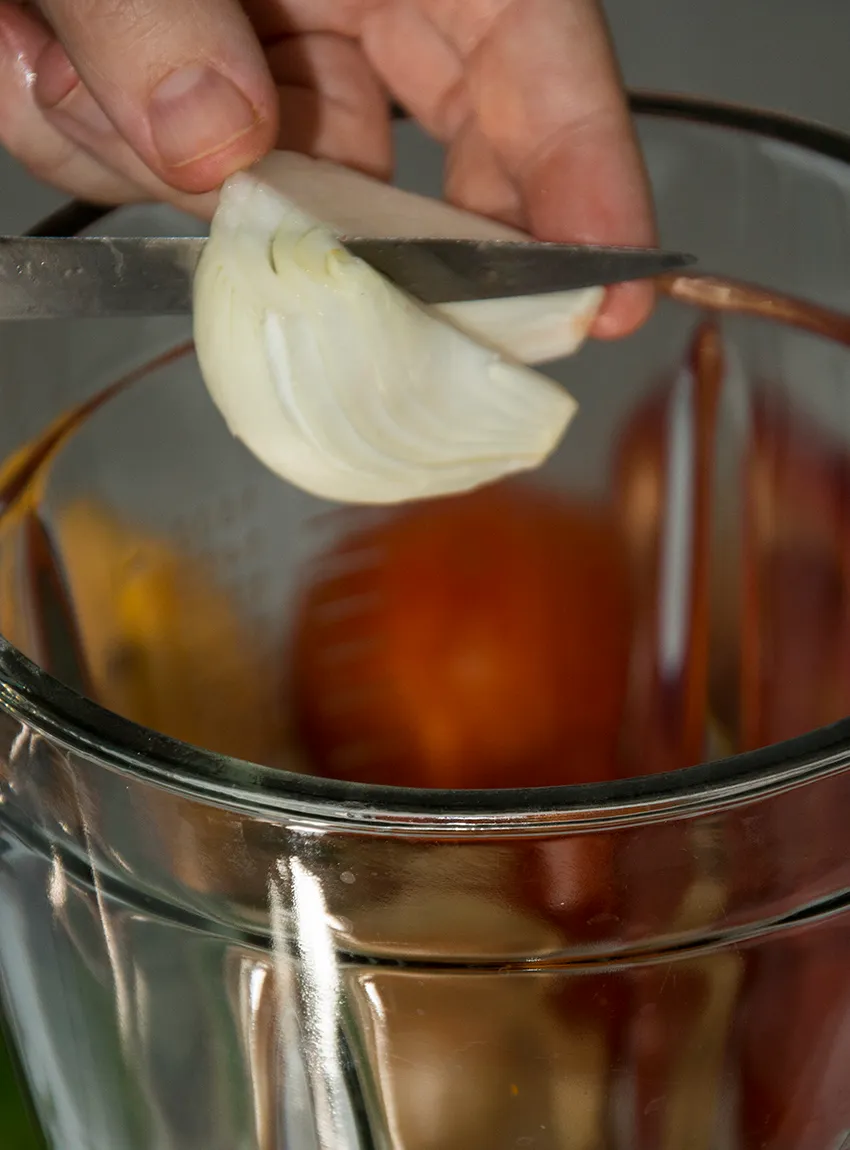
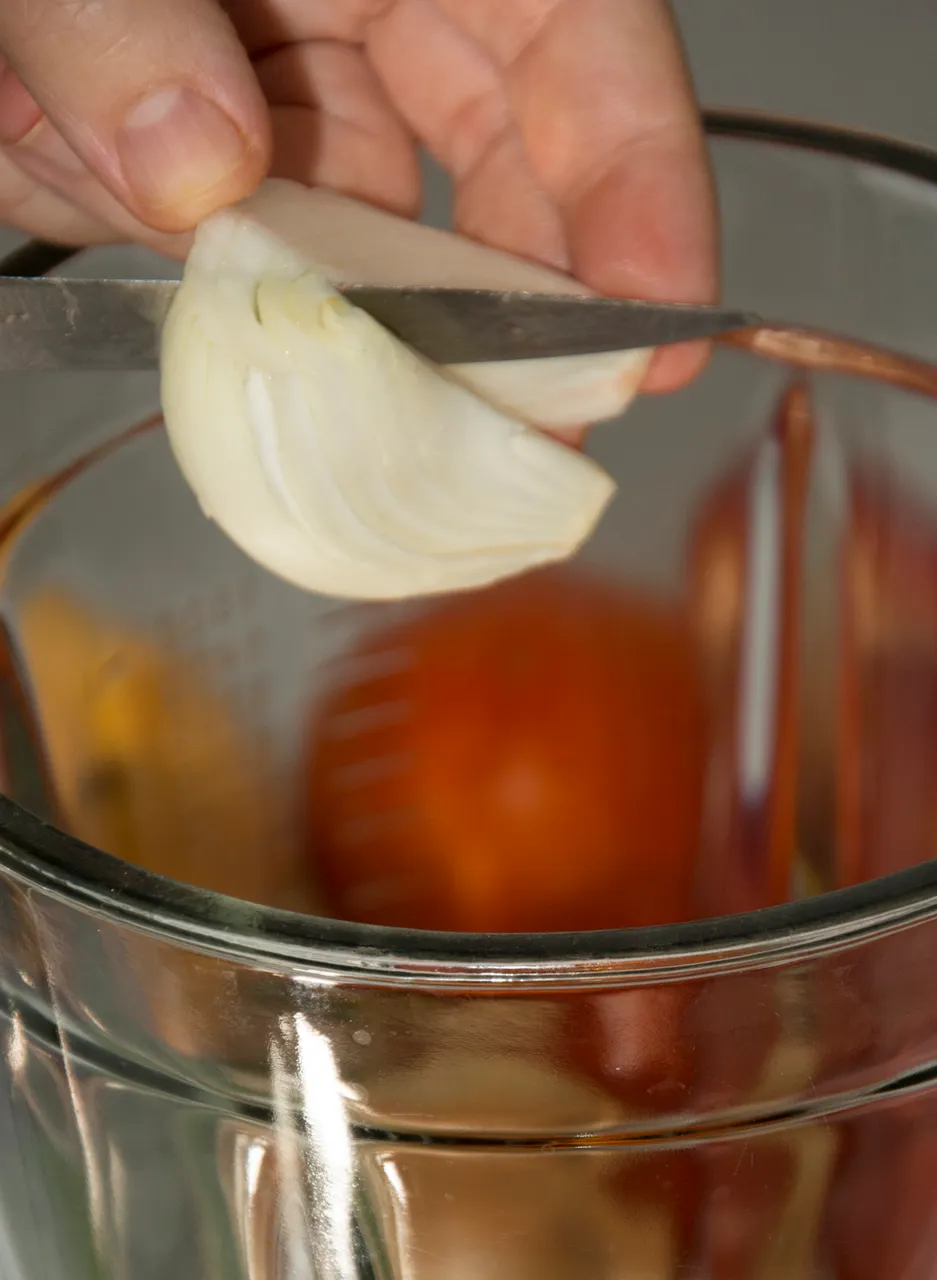




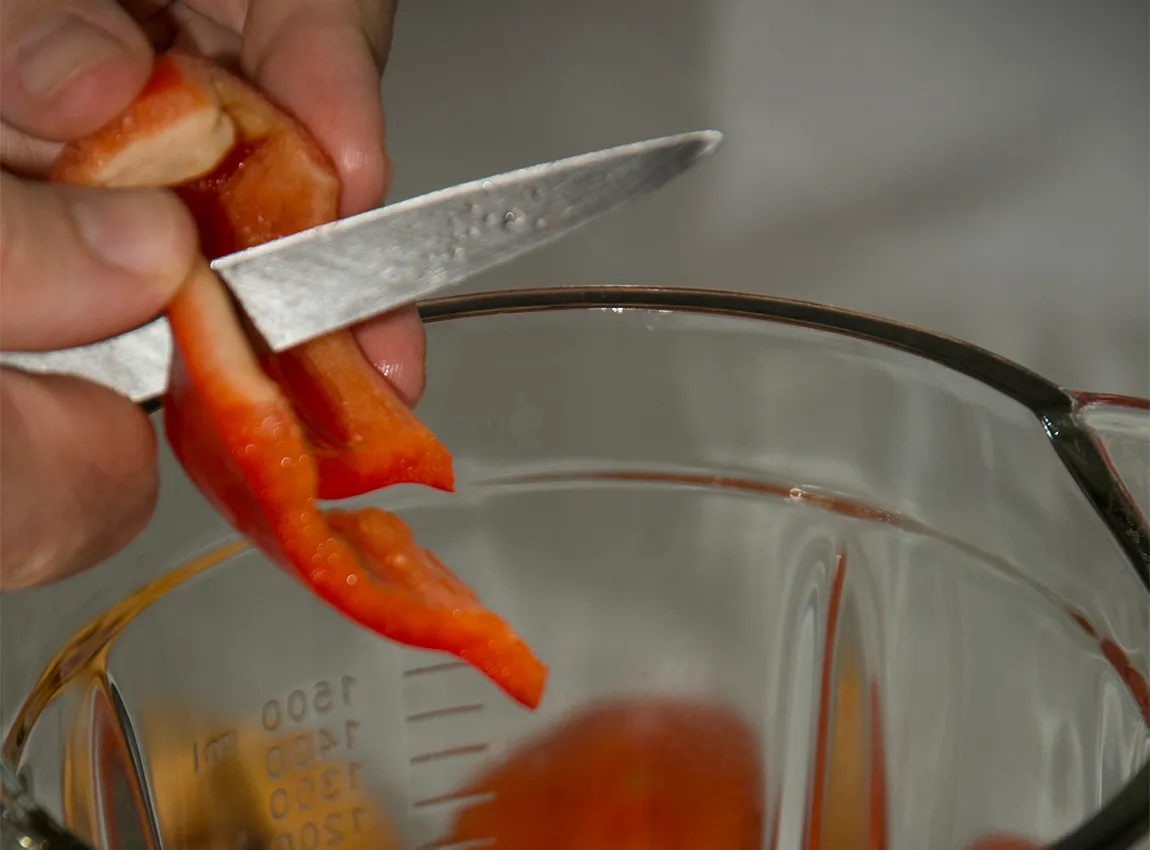













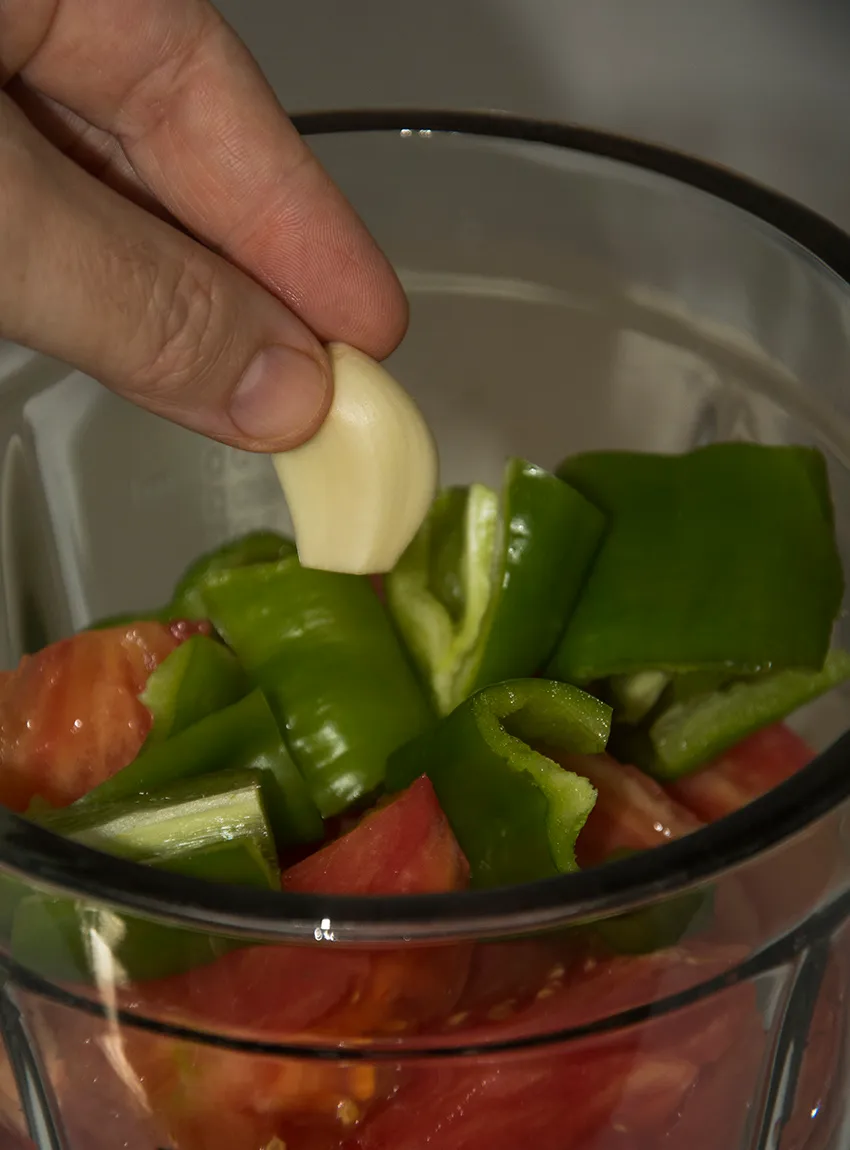













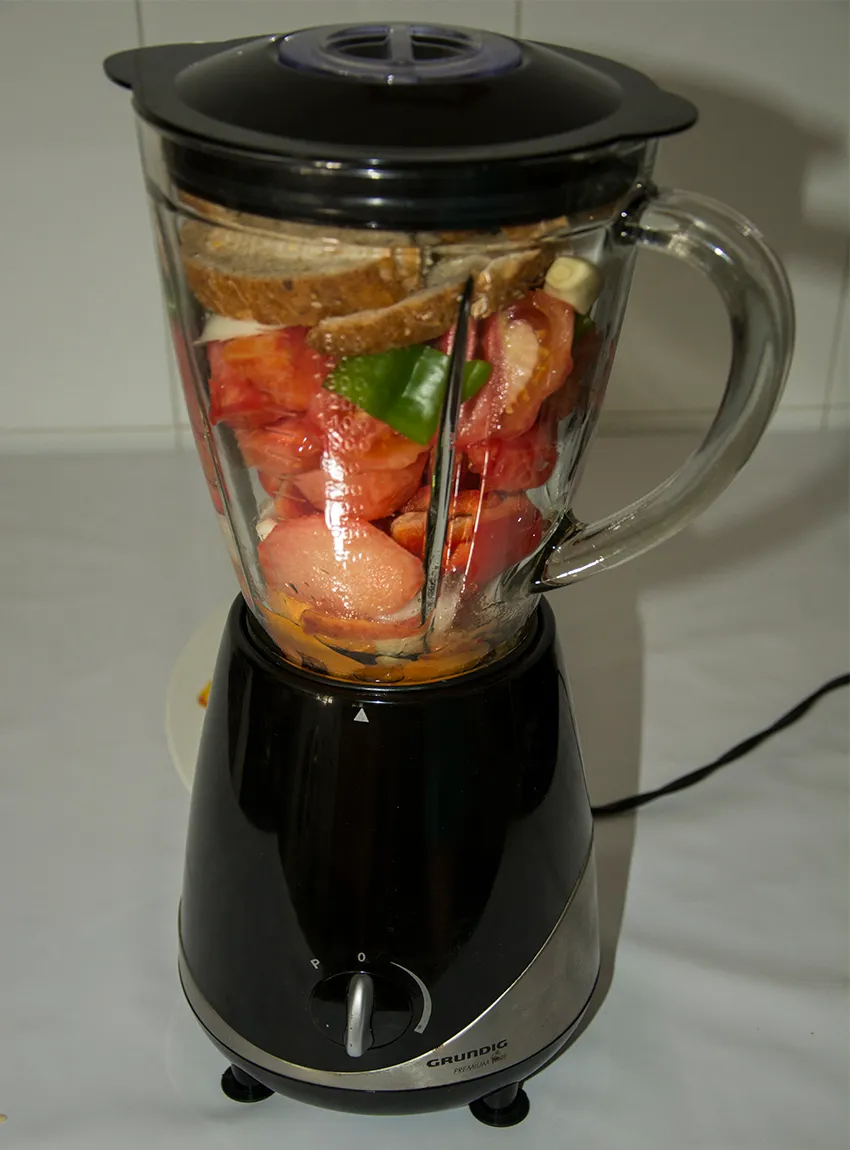







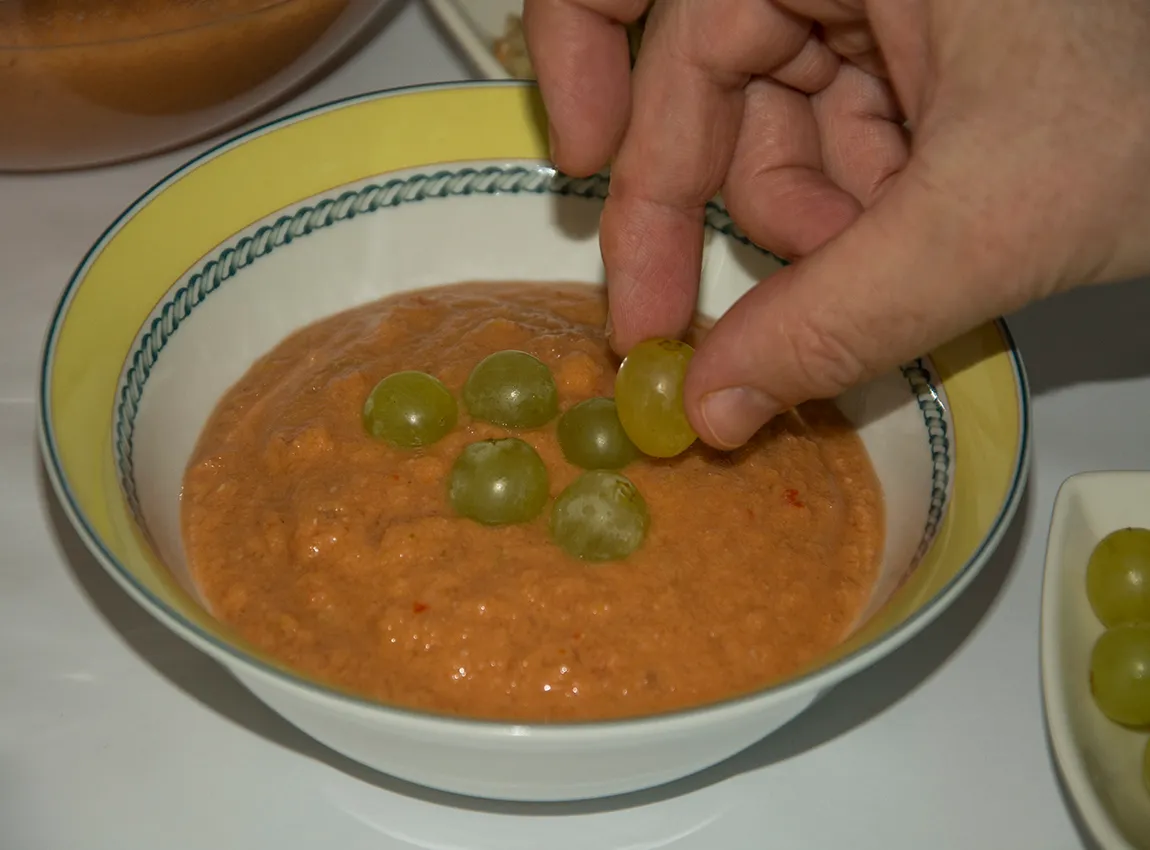




Spanish
Buenos días comunidad.
La cocina española es una de las que más fama y prestigio tienen a nivel internacional y por este motivo voy a publicar una serie de tutoriales de preparación de platos típicos españoles 100% veganos. Los cocineros españoles y sus fuegos son reconocidos mundialmente y premiado con estrellas Michelin en los círculos de la cocina de elite por su innovación y creatividad. Muchos de estos platos son antiguas recetas que fueron evolucionando en el tiempo y adquiriendo nuevas modalidades de preparación. La especial ubicación de España , al sur de Europa y situada entre el mar Mediterráneo y el Océano Atlántico, hace que su cocina tenga una características especiales, además en una de las principales huertas de Europa por su variedad y cantidad de frutas, verduras y hortalizas en esta parte del planeta. Sus enormes extensiones de naranjos, limoneros, granados, olivos, manzanos, cerezos y otros frutarles así como también la producción de frutos denominados secos como nueces, avellanas o almendras hace que las influencias mediterráneas sean claramente marcadas en sus platos. Las culturas que a lo largo de la historia han poblado el país han marcado de una manera clara su influencia a la hora de su legado culinario.
INGREDIENTES PARA 4 PERSONA:
- 3 tomates medianos
- 1 melocotón
- 1 ciruela
- 1 cebolla pequeña
- 1 diente de ajo
- 1 pimiento verde
- 1 pimiento rojo
- 2 rebanadas de pan
- uvas
- nueces
- aceite de oliva virgen
-vinagre de manzana - sal rosa
MÉTODO DE PREPARACIÓN 4 RACIONES
Primeramente seleccionar todas las hortalizas y frutas, lavarlas y pelarlas. Para que el resultado sea un salmorejo fino aunque granulado por el efecto del pan las frutas y el tomate deben ir sin la piel. El modo de corte depende del tipo de utensilio a usar para mezclar y batir todo, en este caso trocee el pedazos medios ya que el instrumento que uso muele bien todos los ingredientes. Procedo a poner las frutas y verduras por el orden establecido en las imágenes.
Voy cortando y colocando primero las frutas, el melocotón, la cebolla, la ciruela para después proceder de igual manera con el pimiento cortado a tiras y el tomate troceado. Este paso puede ser de manera seleccionada ya que a veces es mejor dejar las cosas más blandas abajo para facilitar a las aspas del aparato el molido.
En este punto añado el tomate y también los dientes de ajo el pimiento y por último las capas de pan para luego proceder a uno de los pasos más importantes de este sencillo plato. El uso de aceite de oliva virgen es elemental en la cocina mediterránea presentando unas características únicas de sabor, aroma y textura que ningún otro aceite vegetal tiene.
Prosigo con todos los ingredientes para luego pasar a la fase de molido. Este lo efectúo de manera suave, lentamente al principio para que los trozos mas grandes se vayan deshaciendo. Al hacerlo así favorece también el correcto funcionamiento de las aspas cuchillas y así el mezclado queda homogéneo.
Antes de poner el pan lo ablando con un poco de agua, esto facilitara que este blando y que se mezcle perfectamente con todo el conjunto dándole cuerpo, es uno de los principales secretos del Salmorejo. El pan y el aceite de oliva.
Ya casi llegando al final de la preparación es cuando añado la sal rosa, el aceite de oliva y un chorro de vinagre de manzana natural. Más tarde y después ya de molido corregiré si es necesario añadiendo algo más de sal o aceite.



| Categoría | Phototalent |
| Ajustes | ISO-100 f/8 1/100s |
| Cámara | Nikon D7100 - Olympus E410 y Kodak Z |
| Lente | Nikkor or Olympus |
| Localización | Spain |


Image ©oscarps. All Rights Reserved.
Original content by @oscarps




